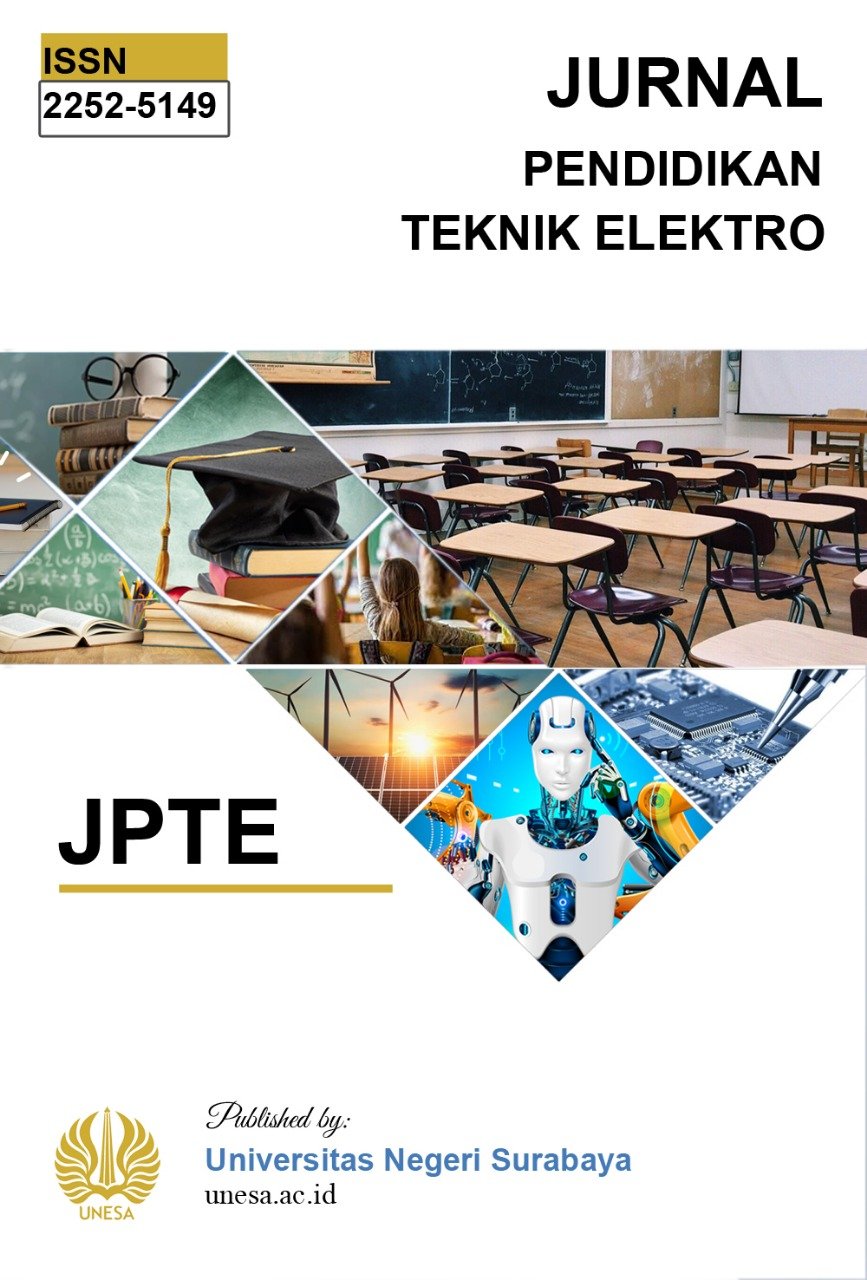PENGARUH MODEL PEMBELAJARAN BLENDED LEARNING DIBANDINGKAN E-LEARNING DIPADU PENDEKATAN SCIENTIFIC APPROACH TERHADAP KEMAMPUAN HOTS DLE KELAS X TITL SMKN 6 MALANG
DOI:
https://doi.org/10.26740/jpte.v10n03.p337-346Keywords:
HOTS, Blended Learning, E-Learning, Scientific Appoarch, and Basic Electrical ElectronicsDownloads
Download data is not yet available.
Downloads
Published
2021-07-14
How to Cite
Fahmi, A. N. D. N., Kholis, N., Basuki, I., & Sumbawati, M. S. (2021). PENGARUH MODEL PEMBELAJARAN BLENDED LEARNING DIBANDINGKAN E-LEARNING DIPADU PENDEKATAN SCIENTIFIC APPROACH TERHADAP KEMAMPUAN HOTS DLE KELAS X TITL SMKN 6 MALANG. Jurnal Pendidikan Teknik Elektro, 10(03), 337–346. https://doi.org/10.26740/jpte.v10n03.p337-346
Issue
Section
Articles
 Abstract views: 228
,
Abstract views: 228
, PDF Downloads: 189
PDF Downloads: 189





